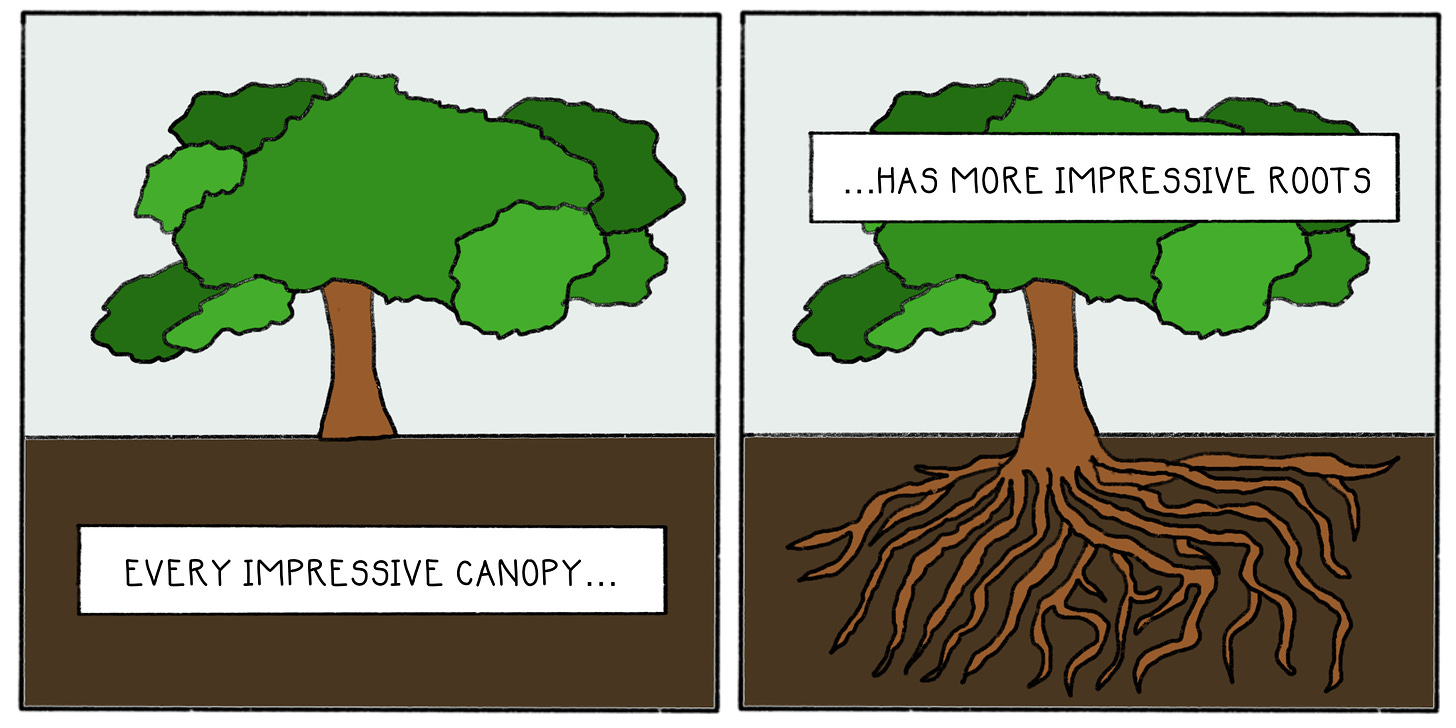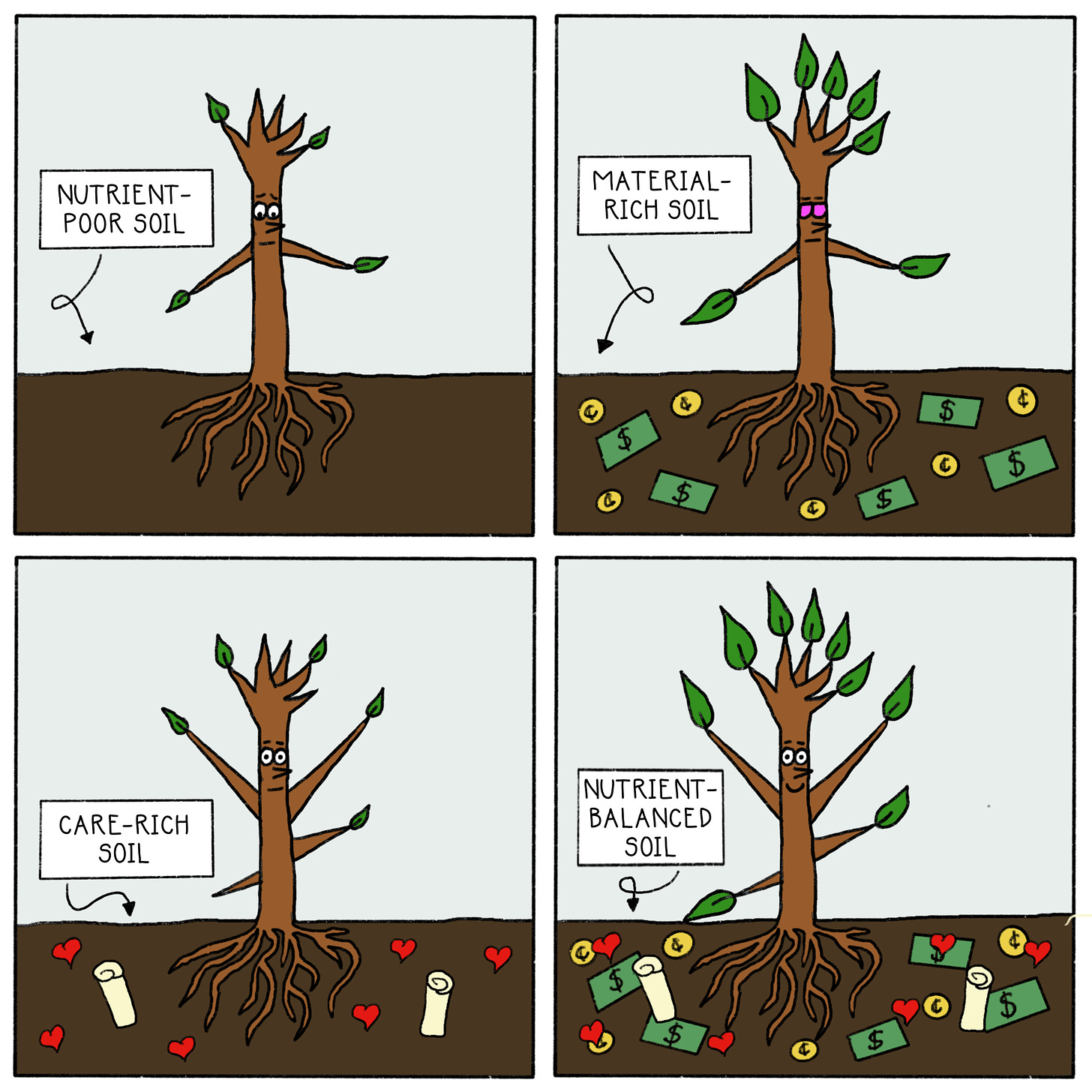22 February 2023
Rootwork
When I was ten and obsessed with Redwall, I arose an hour early to write a page for my fantasy saga about warring anthropomorphic animals. These “books” never earned readers other than encouraging family members, but I believed they could be big someday if only given time in the limelight. My expectations contained more fantasy than my novels.
After failing to meet my unrealistic dreams over the years, I learned to face the question: Am I prepared for opportunity? Would I be ready for a segment on the Tim Ferriss podcast? If I suddenly had ten-million dollars to invest, would I even know what to do with it? If my dream job came on a silver platter, could I perform in the interview?
The answer is often a resounding “no.” Quality opportunities only appear to those who put in the legwork. An interview with Oprah would be worthless if we couldn’t write something worth publishing.
Imagine a tree with an expansive canopy. The tree has thousands of leaves ready to capture light wherever the sun appears. All this photosynthetic surface area positions the tree to seize opportunities. Successful people and initiatives are similar—they have robust systems to capture leads, capital, and followers. While it’s easy to admire their sprawling canopy, it’s not the only component of success. Every large tree has a stable root system.

Environment
A palm tree won’t last in Antarctica, nor will a sequoia grow in the Sahara. Even with generous loads of TLC, trees won’t take root in the wrong environment.
Likewise, people or initiatives fail in ill-suited situations. Nobody has a say where they’re born or raised, so some people start on craggy rocks where it’s next to impossible to form healthy roots—abject poverty, abusive homes, or having a marginalized identity. Environment can be a limiting factor for our endeavors too. Relative to a surf shop in SoCal, selling surfboards in Kansas is doomed without substantial effort.
While we can’t pick our starting environment, we can choose our future environments. Instead of wandering into lightless caves, we could choose an environment that will serve our future goals. Moving to the Bay Area could enable more opportunities if we want to work in Big TechTM. If we want to improve our cardio, joining a trail-running meetup can be more suitable than haunting a brewery.

Are we in the place we want to grow?
Nutrients
An apple tree might live in the ideal climate, but its roots need rich, hydrated soil to gather nutrients. We require the resources and education to make our environment count.
A motivated college grad could land a job at their dream company, but they could spin their wheels without the right mentorship. Or a brilliant artist could not afford materials—rendering them unable to paint. A profitable product could erode in the market with reduced support quality.

What resources do we require for growth?
Community
Arborists observed a strange forest phenomenon: salmon DNA appeared in trees five miles from the nearest river. When a bear left a salmon carcass on a riverbank, its flesh decayed into the soil. Tree roots absorbed the flesh and passed the information through its root network via mycorrhizal fungi—earning the moniker “Wood Wide Web.”
Trees communicate with one another via their roots—not just salmon DNA but all sorts of information about the health of the forest, changing climates, and invasive species. Humans, like trees, are social creatures. Without community, we struggle to grow as winds on an open plane can rip us from the soil. When part of a forest, our roots intermesh and help us endure storms we couldn’t stand alone.

Are we forming relationships that support growth?
Perpetual Rootwork
Rootwork is invisible since a foundation forms beneath the surface of success. But the work to find the right environment, gather nutrients, and foster a supportive community are table stakes for growth. Good roots won’t magically appear—we must deliberately invest in them. No matter our age or circumstance, there’s always room for Rootwork.